Suburban secrets
Since I started chasing lost creeks, I have been drawn to spaces that most people would tend to ignore or avoid. For example, I often find myself peering into drains, which in many urbanised areas are the only waterways left. I’m sometimes tempted to venture inside them, but I rarely do.1 Out in the suburbs I’ll look twice at any gully or ditch that has not been covered over. These watercourses sometimes run through scenic parks, but more often they are tucked away in roadside scrub or remnant bush.
The bushland between Mount Coot-tha Road and Birdwood Terrace, where I stumbled upon a gully full of bottles, cans and other rubbish. View Larger Map
Exploring suburban gullies is hardly a taboo like venturing into drains, but neither is it a popular pursuit. For all of the prickles and scratches you are likely to endure, you can hardly expect to see nature at its finest.
Yet to me, there’s a certain appeal about being in a space that in all likelihood has not been looked at for many days, walked through for many weeks, or cleaned up for several years or decades. Such places remind you that there are still things to discover in an otherwise predictable suburban environment. If you keep your eyes peeled in a place like this, you never know what you might find.
I recently found myself in just such a place while exploring the headwaters of Langsville Creek. This creek exists only in fragments now, but it once flowed all the way from the Mount Coot-tha Quarry to the Brisbane River at Auchenflower. Its catchment neighbours that of Western Creek, the forgotten waterway that is the main focus of this website.
My exploration of Langsville Creek had taken me to a patch of bushland between Mount Coot-tha Road and Birdwood Terrace. I followed the Old Mount Coot-tha Road from near the entrance to the botanical gardens, and walked downhill through a clearing not far from Walter Street. Before I knew it, I was at the bottom of a damp and weedy gully.
One man’s trash?
The gully is located within a sizable patch of bush, but still close enough to the houses on Walter Street that you would expect to see some signs of human presence. This I found in the form of a generous smattering of rubbish.
Bits of a tin roof, shreds of carpet, shards of fibro, rusty bolts and brackets, pieces of pipe and ceramics, the odd brick, a chunk of concrete . . . it seemed that the best part a small house had found its resting place there. I also found a dozen or so golf balls stamped with at least four different brands.
I wondered how long this rubbish had been here, and started looking for clues that might tell me. Presumably, the brands and stylings on the golf balls could be traced to a particular time, but the knowledge required to do so would be obscure to say the least.2 The bricks, too, would have stories to tell, but only to someone who knew how to read them.
Thankfully, another collection of items offered a more promising lead on when the rubbish might have been dumped. Scattered amongst the building debris and golf balls was an assortment of bottles and cans. Some were intact, others in pieces; some were shiny, others faded or rusty. But none of them looked like bottles and cans you would see on a supermarket shelf today. What set them apart from modern products was not just their sizes and shapes, but also their logos and brand names, most of which could still be read clearly.
These bottles and cans once contained products that were bought and consumed every day — products that would have been widely known, and would still be remembered by many people. They also would have been advertised in newspapers and magazines, some maybe even on television. In other words, there should be enough information floating around — whether in print, on the internet or in people’s heads — to pin an estimate on when they were used and discarded.
I left the gully having taken only a few photos with my phone. Aside from not having no way to carry them, I almost felt like these bottles and cans had earned the right to stay there. But a nagging sense that they might have a story to tell led me to return a week later, green bags in hand, to take them away. I gave them a bath and a scrub, then treated them to a photoshoot in the afternoon sun. I did my best to make this trash feel like treasure.
As the dirt lifted to reveal more colours and markings (or in some cases just more rust), I realised that there were more interesting questions to ask about these items than simply how old they were. Behind the unfamiliar logos and brand names were not only discontinued products but whole companies that had flourished and disappeared. Even the brands that I recognised bore little more than an ancestral resemblance to their modern forms.
I realised that each of these empty containers could be a time capsule, and the whole collection of glass and aluminium a window to the past. Had I known that I would still be writing about these items three months later, I might have left that window shut and walked away. But, sucker that I am, I opened it right up. Thankfully, the view turned out to be worthwhile, and surprisingly relevant to my research on Western Creek and its surrounds.
If only Australia could blend a cola…
The first can that caught my eye — literally because it outshone the rest — was this one. It was crushed, full of dirt and had roots growing out of it, but the colours and words on the can were clear:
EXPORT COLA.
Serve nice and cold.
Export Cola? I’d never heard of such a drink. Nor had I ever seen a can that holds 370ml (instead of today’s customary 375ml) or that had a perfectly circular opening like this one. This can also felt slightly sturdier than today’s aluminum cans.
I figured that this can was likely to be older than me. I admit that I didn’t hold much hope of tracing its origin: the brand seemed too generic to be of any significance. But to my complete surprise, a Google search returned these two television commercials from the 1970s:
This, it seems, was Australia’s cola. It looks to me like a product of a time when Australia was trying to overcome its cultural cringe and reassure itself that it could do things just as well as the rest of the world. If we could make our own films and brew our own beer, then damned if we needed to import someone else’s cola. We could make our own: export-grade, no less.
(Of course, I’m guessing that Export Cola was never actually exported anywhere, but that’s beside the point.)
And who made Export Cola? The Export Cola Company, of course: it even says so on the can. According to Wikipedia, Export Cola was made by the multi-national Cadbury–Schweppes, and was available during the 1970s and early 1980s. It was relaunched in the 1990s but disappeared again by 1999.
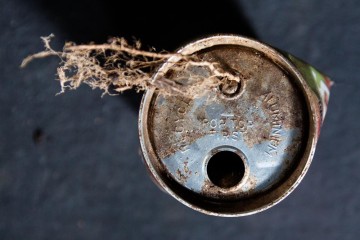
The Export Cola can has a push-button top. This design was introduced in 1974 but was phased out by the early 1980s.
I can remember cans from the 1990s, and they didn’t look like this one. So it’s a pretty safe bet that this can is one of the 1970s-1980s originals rather than a 1990s re-release. The top of the can has two circular openings, one large and one small. The larger hole is obviously for drinking through, and it has been opened by a tab (still attached) that has been pushed inside. The smaller hole is actually a domed button, which has been pushed down just far enough to break the seal. In between the two holes are the words “Push top first”.
This is an example of a push-top can, a failed experiment that was introduced in 1974 in an attempt to do away with detachable ring-pull tops,3 which had become a major litter problem. The can was opened by first pressing the small button to release the internal pressure, and then pushing in the large tab to open the can. Apart from being fiddly, this system was also unsafe, as drinkers could easily get their fingers stuck or cut when opening the can. The design was phased out in the late 1970s and early 1980s, by which time the modern ‘StaTab’ design had been introduced by the Reynolds Aluminium Company (now Alcoa).4
So, here we have two lines of evidence — advertisements and can construction — converging at the same conclusion: that this can dates to the mid to late 1970s, making it around 35 years old. (And yes, that means that it is indeed older than me.)
A final point of interest is a small Comalco logo near the bottom of the can. Comalco was formed in 1957 as a partnership between the British Aliminum Company and the Commonwealth Aluminium Corporation, which had been founded in 1956 to develop the bauxite deposits at Weipa. Comalco was taken over by Rio Tinto in 2000 and changed its name to Rio Tinto Aluminium in 2006.
Tristram’s please!
The next can that I found had not weathered the years quite so well. Its colour and branding had largely faded away (not export grade, clearly), but there was just enough left to identify it: Tristram’s Orange Flavour.
‘Tristram’s soft drinks’ rang a bell: I think someone had told me about them before, but I don’t remember ever seeing or drinking one. So again I turned to Google to see what I could find.
It turns out that Tristram’s soft drinks were a bona fide local product: locally made, locally owned, and with no multi-national company pulling the strings. The story goes back to 1875, when Thomas Tristram began manufacturing ginger beer and other soft drinks in Hope Street, South Brisbane. In 1928 the company shifted its production to a new factory at 79 Boundary Street (also in South Brisbane, but you could mistake it for West End). This factory has long since closed down, but the building still stands, with its distinctive Mission Revival style architecture carefully preserved, as The Markets Shopping Centre.5
The factory’s outward design echoed that of 18th and 19th century Spanish missions, but its internal workings were thoroughly modern, ensuring that the company’s products could be made safely, efficiently, and above all, hygienically.
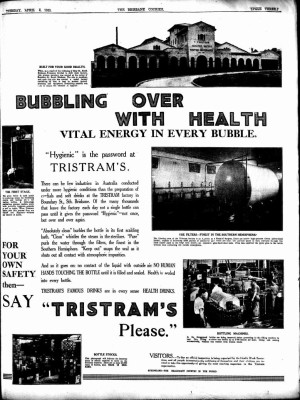
An advertisement for Tristram’s Soft Drinks in The Brisbane Courier, 4 April 1933.
This full-page ad from The Brisbane Courier in 1933 shows just how keen the company was to boast about their factory’s hygiene standards. The building’s grand facade occupies the top of the page, but the rest of the space is devoted to the equipment inside: the great boiler that generated the steam and hot water used to clean the bottles; the water filters that were housed in a room ‘as hygienic as a Hospital Surgery’; and the bottling machines which could fill and seal bottles ‘without any contact from human hands’.
It would be strange to see a factory featuring so prominently in a food advertisement today. Food manufacturers would prefer us to imagine that their products come straight from nature itself. The manufacturing process is now all but invisible, and the product’s hygiene is taken for granted.
Even more out of place in a soft drink ad today would be the word ‘health’. Yet this ad would have us believe that the product’s cleanliness makes it not only only safe, but also good for you. ‘Health is sealed into every bottle’, it says. ‘TRISTRAM’S FAMOUS DRINKS are in every sense HEALTH DRINKS’. A similar ad, published in the Brisbane Courier in 1929, even offers the docterly advice, ‘For your health’s sake, take one daily’.
Statements like these in a soft drink ad would today be roundly condemned, but they were not unusual at the time these ads were published. The day before the 1933 ad was printed, the Brisbane Courier ran an ad claiming that Beenleigh Rum helped to keep Queensland’s deathrate the lowest in the world. Two pages later, another ad said that doctors endorsed the ‘high food value’ of Peters Ice Cream — ‘The Health Food of a Nation’. It turns out that these ads were all cashing in on Queensland’s ‘Health Week‘ (although as another ad explained, every week was Health Week for those who drank Fourex). All kinds of brands must have been keen to jump on the health bandwagon and apparently were free to do so, whether they sold soft drink, ice cream, rum, beer or schnapps.
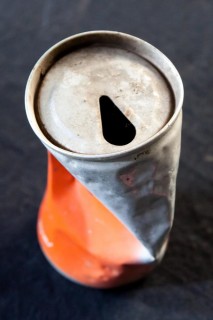
The Tristram’s can has a ring-pull top, a design that was common in the 1970s but was phased out by the early 1980s.
This is all very interesting, but it doesn’t tell us anything about the origin of the crumpled can I found in the gully. I haven’t been able to determine when Tristram’s started putting drinks in cans, or when the last can (or bottle) of Tristram’s soft drink was sold. Without such information, we can only assume that the can is of a similar vintage to the Export Cola can. And indeed, it holds the same volume (370ml), has the same Comalco logo, and is of identical construction — except for the top.
This can provides an example of a ring-pull top. Introduced in the mid 1960s, this kind of top was opened by tearing away the tear-drop shaped tab, which along with the ring attached to it was then discarded. Not surprisingly, a good number of these pull-tabs ended up on the ground rather than in the bin. More litter-conscious drinkers would drop the tab into the can, putting themselves at risk of swallowing it. Campaigns against the detachable tabs led to various non-detachable designs being developed, one of which was the push-top featured on the Export Cola can. The modern ‘StaTab’ design was introduced in 1975 and by the early 1980s had become the standard.
Tristram’s soft drinks may be a thing of the past, but the family business is still going under the name Trisco Foods. The business is now based at Carole Park, and among its products are ice-cream toppings, coffee syrups, marinades, and carbonated beverage bases.
Water from the moon — the legend of the Helidon Spa
Over time cans may crumple, fade and rust, but at least they tend to remain in one piece. Glass bottles, on the other hand, stay as hard and shiny as the day they were made, but have the unfortunate habit of breaking into pieces — as is the case with this next specimen from the gully. I never did find the remainder of the bottle, but fortunately we don’t need it to know which company the bottle belonged to. There is no trace left of a label, but embossed clearly in the glass is
THE PROPERTY OF
THE HELIDON
Along the broken edge of the bottle are the last three letters of a third line, which I would be willing to bet said “SPA WATER COMPANY”.
If you’re as young as me, you probably only know of Helidon Spa (if you know of it at all) as a place you drive past on the way from Brisbane to Toowoomba. It is located in the upper Lockyer Valley along the Warrego Highway, just a few minutes from the Toowoomba Range.
As its name suggests, this place is — or was — famous for its natural springs. The Aboriginal people of the area called the springs ‘Woo-Urra-Jimi’ or ‘Oogarding’, meaning ‘the place where the clouds fall down’. The mineral-rich, naturally effervescent waters were known in one dreamtime legend as ‘Goo-Neel-Goong’ — the water from the moon. The legend tells of a tribe that was buried by falling clouds in an act of celestial vengeance after a woman had allowed two lice from her hair to be blown into a campfire. The waters that sprung from the tribe’s burial place possessed special healing powers for whoever bathed in them. Out of respect for the buried tribe, however, the waters could not be drunk.6
The springs also came to the attention of the colonial settlers, who had no qualms whatsoever about drinking the sacred waters. When the explorer and botanist Alan Cunningham passed through the area in 1827 he was quick report the springs to the pastoralists coming from the south. Sir Augustus Charles Gregory, the explorer, Surveyor-General and original resident of Rainworth, also wrote about the springs and even claimed to have identified their source 300 miles away in the New England Mountains.7
Springtime for Helidon
The early settlers may not have believed in Dreamtime legends, but they did believe in the health-giving properties of spring waters — as did the ancient Greeks, the Romans, and probably many other societies throughout history. Health spas and bottled spa water were all the rage in Europe in the 19th century, and they were also popular in the fledgling Australian colony.8
So it was only a matter of time before someone found a way to make a buck out of the Helidon Spa. As early as the 1850s a local publican was mixing it with whiskey, but the first person to bottle and sell the water was a chemist named Reginald Larard, who started selling ‘Oogar Dang Water’ in 1879.9 At about the same time, a Scotsman named Gilbert Edward Primrose purchased the grazing and agricultural land around the springs. The two men entered into a partnership in 188110 and established established the Helidon Spa Water Company. When they parted ways in 1885, Primrose carried on as the company’s managing director.11
Primrose and Lerard initially bottled the water at the spring, but due to breakages and other complications they decided to transport the water via rail in wooden barrels to a bottling factory in Elizabeth Street, Brisbane. In 1899, the bottling operations were moved to a new factory at North Quay between Skew Street and Makerston Street.
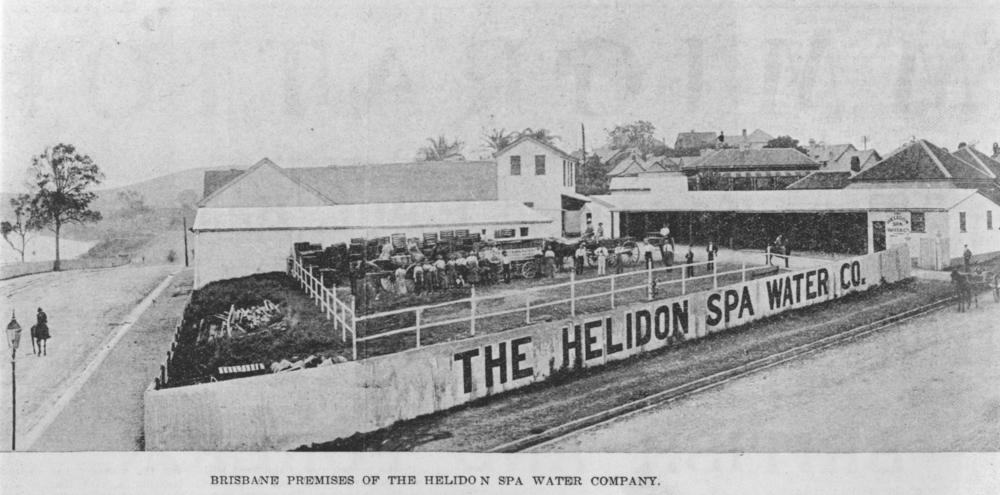
The Helidon Spa bottling factory at North Quay, 1899. (John Oxley Library, State Library of Queensland, Image no. 11983)
The Helidon Spa also became a money-spinner for the local hotel and tourism trade. The first spa park in the area opened in 1926, but things really took off in the 1960s with the development of a caravan park and excavation of a huge swimming pool, which was then the biggest in Australia. For a time Helidon was known as ‘Toowoomba’s Gold Coast’, but business declined in the 1980s amid water quality problems and public health concerns. Today only a few small hotel spas remain.12
The ultimate tonic
Spring waters are not created equal. Each one has a unique chemical signature imparted by the rocks and soils in which the water has resided. The minerals present in a spring water determine its taste and effervescence (the latter resulting from the presence of sodium carbonate), and they were once believed to impart medicinal qualities as well.13 Helidon Spa’s claim to fame was its high lithium content, which supposedly made it a powerful tonic for cleansing the bladder, kidneys and digestive system.14

An ad for Helidon Spa printed in the Townsville Daily Bulletin in March 1908 (Trove).
Spring waters are still marketed today as having health benefits over other sources of drinking water. But the claims made today, dubious as they may be, are nothing compared with those used to sell Helidon Spa and other spring waters a hundred years ago. Here is just a sample of single-line ads for Helidon Spa Water that appeared in the Townsville Daily Bulletin and Rockhampton’s Morning Bulletin in 1907 and 1908:
Helidon Spa Water . . .
. . . comes from Nature’s own Laboratory, absolutely pure beyond reach of contamination.15
. . . frees the system of its impurities and at the same time tones it up like magic.16
. . . supplies the blood with necessary saline constituents.17
. . . is extolled by Physicians as a corrector of disordered digestion.18
. . . prevents a vitiated state of Gastro functions.19
. . . saves such wear and tear of the digestive organs.20
. . . removes Acidity–eliminates Alcohol and pacifies all stomach irritation.21
. . . is nature’s sovereign source of rosy cheeks, translucent Complexion and high health.22
. . . when iced occupies the highest position among effervescent liquids.23
. . . is equally efficacious whether taken at the spring or from bottles.24
. . . instantly produces a feeling of tranquility and calm to restless nerves.25
. . . is development of higher civilisation and more perfect knowledge of human system.26
Helidon Spa may as well have been the fountain of youth: a tonic for digestion, for the skin, the blood, for sleep and nervous tension. It was also the holy grail of mixer drinks, not only complementing the taste of alcoholic beverages but supposedly neutralising their ill-effects, allowing the drinker to indulge without reservation.
Sleep, quiet and refreshing, is induced by HELIDON SPA.27
A course of this water makes the skin white as snow and soft as velvet.28
A Saline Alkaline Mineral Water like Helidon Spa restores nervous tissue.29
Gin and Helidon Spa is one of the most nourishing drinks one can take.30
Ten times the amount of Alcohol con be consumed if diluted with Helidon Spa.31
Claret and Spa is a blood and bone maker.32
No reservation as to quantity of Whiskey or Brandy when mixed with Helidon Spa.33
Silly as these claims may be, at least they were not being used to sell soft drink, liquor or some other product that was likely to do the consumer more harm than good. I wonder though, if the hype surrounding Helidon Spa and other mineral waters might have been one reason why Tristram’s (a direct competitor with Helidon Spa’s soft drink line) were compelled to market their own products as ‘health drinks’.
When Helidon Spa met Western Creek
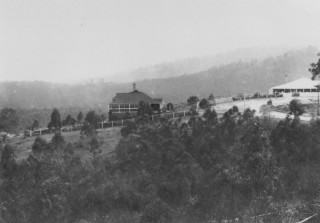
The residence ‘Pen-y-lan’, at 96 Simpson’s Road, Bardon, 1915. John Joyce, managing director of the Helidon Spa Water Company, moved here with his family in 1919. (John Oxley Library, Negative No. 188102)
In 1906 Gilbert Primrose stepped down as managing director and handed the reigns to John Joyce, who had been with the company since starting as an office boy in 1883.
Joyce married in 1902 and sometime thereafter took up residence in Weinholt Street, Auchenflower.34 Weinholt Street lies in the south-western part of the Western Creek catchment. In 1919, he moved to a house named Pen-y-lan at 96 Simpsons Road, where he would have had a magnificent view of the entire catchment.35
When John Joyce died in 1925, the business passed first to his brother Daniel and then to his sons Joseph Patrick and James Gervase (‘Gerb’) when Daniel died in 1956.
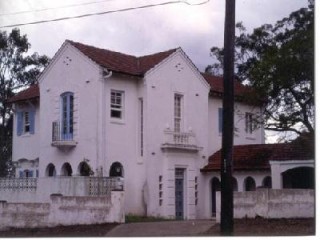
‘Oogarding’ at 100 Simpsons Road, was built by Gerb Joyce in 1940 and remained in the Joyce family until 1999. (Photo from the Queensland Heritage Register)
In 1940, Gerb and his wife Edith commissioned the architect Mervyn Rylance to design a house on a one-acre allotment which had been subdivided from the Pen-y-lan property. The resulting house at 100 Simpsons Road remained in the Joyce family until 1999, and is listed in the Queensland Heritage Register as one of the best surviving examples of Rylance’s work and of Mediterranean style architecture in Queensland.
Gerb gave his new home a strange sounding name that paid homage to what could be considered to be the building’s true foundation — that sacred place where the clouds once fell down, and where Edward Primrose and Reginald Larard started bottling water from the moon. He named it ‘Oogarding’.
The Joyces’ new home on Simpsons Road brought the Helidon Spa to Western Creek, at least in name and spirit. But the two waters would eventually meet (or come close to it) in a literal sense as well. Some time before World War II, the Helidon Spa Water Company purchased a property along the lower reaches of Western Creek, which by then had already been made into an open concrete drain. The property was bounded by Lang Parade, Roy Street and Kilroe Street. Today, it is the site of the Milton Village commercial centre. This land became the paddock for the horses that pulled carts loaded with the company’s soft drinks and spa water.36 The land back then would have looked much like it does in the 1946 aerial photo, shown below with the aid of Google Earth.
The Helidon Spa Water Company’s paddock at Lang Parade in 1946. The company built a bottling factory here which operated until the 1970s. Today it is the site of Milton Village (hover over the image to see the present landscape).
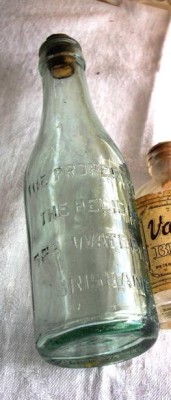
An intact example of the Helidon Spa bottle that I found in the gully. (Photo courtesy of I & K Enright)
In the late 1950s the company built a new bottling factory on the site. The factory remained there until 1973, when operations were moved to Fortitude Valley.37 Here, at Lang Parade, is where the waters of Helidon Spa and Western Creek might have met. All it would have taken was a spill on the factory floor, the drains of which would have run straight into the adjacent Milton Drain.
This factory is also likely to be where the bottle that I found in the gully was filled. In fact, the bottle might have been filled here several times, for bottles like this one were intended to be collected and re-used rather than just thrown away or recycled. This is why the company’s ownership is announced so prominently on the bottle.
Before it was broken, I suspect that the bottle from the gully would have looked just like the one shown on the right, which was recently sold on ebay (with a whiskey bottle) for $12. Don’t be fooled by the cork — the bottle would have originally had a crown seal to keep in the pressure.
This type of bottle also appears in Joan Webster‘s history of the Helidon Spa Water Company.38 Webster suggests that bottles similar to this one were used between 1910 and 1970. I think it is reasonable to assume that this particular bottle was filled and purchased in the latter part of this period, given the age of the Export Cola and Tristrams Orange cans that accompanied it in the gully. But it is entirely possible that the bottle was made much earlier and refilled many times over.
Spa Wars
When Gilbert Primrose and Reginald Larard teamed up in 1881, they had Helidon Spa’s water as well as its name to themselves. But their monopoly did not last for long. In the late 1890s, two other companies established bores in the area and started selling their own lines of Helidon Spa water. Primrose, who by then was the sole director of the Helidon Spa Water Company, was not impressed. So began the spa wars.
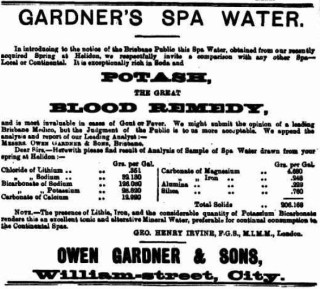
An ad for Gardner’s Spa Water in The Brisbane Courier, 15 May 1901 (from Trove).
The first competition for the Helidon name came in October 1896 from Owen Gardner and Sons, a company that had been manufacturing and selling soft drinks in Brisbane since 1850.39 Primrose wasted little time in seeking an injunction that would prevent Gardner and Sons from so much as mentioning the words ‘Helidon’ or ‘Spa Water’ on their bottles or advertisements. Apart from a few small concessions, Primrose got his way.
The same argument was had again in 1900 against Edward Campbell, who owned the Brisbane Aerated Water Company and had been selling water from Helidon as ‘Campbell’s Spa Water’ since 1897. Again the judge found in Primrose’s favour, but Campbell appealed and was able to argue his case before the Full Court led by the Chief Justice Sir Samuel W. Griffith. The court concluded that Primrose did not have exclusive rights to the words ‘Helidon Spa Water’ after all, and that Campbell could use them so long as he kept his branding distinctive.
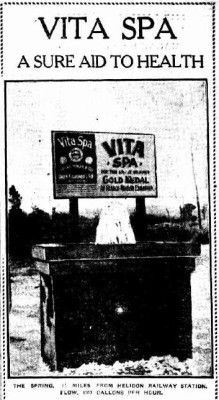
An ad for ‘Vita Spa’ (sold by Owen Gardner and Sons) printed in the Brisbane Courier in 1925 (from Trove).
There are no ads (that I can find) for Campbell’s Spa Water in any of the newspapers on Trove, whether before or after the 1900 judgement, so I don’t know what became of that particular product.40 Owen Gardner and Sons relaunched their product in 1901 as Gardner’s Spa Water. In the 1920s they changed the name again to Vita Spa.
Having been denied exclusive rights to the Helidon Spa name, Primrose and his successors continued to pitch their product as the genuine article — the real Oogarding water — while warning the public to steer clear of ‘poor imitations’ with inferior taste and medicinal value.41 Owen Gardner and Sons responded in their advertisements with chemical analyses and authoritative testimonials to prove that their water was equal, if not superior, to any competing product.42
Import sodas coming through
After bubbling on for several decades, the spa wars had a happy ending — or perhaps a bitter-sweet one, depending on your perspective. In the 1950s, the soft drink market began to change with the increasing influence of multinational corporations such as Schweppes and Coca-Cola. Local manufactures faced an uphill battle to remain competitive unless they expanded or joined forces. And so the Helidon Spa Water Company and Owen Gardner and Sons began to discuss a merger. They also invited Tristram’s, then Brisbane’s biggest soft drink manufacturer, to join them. But Tristram’s chose to forge on alone, and the two long-term rivals merged in 1959 to form Helidon Gardner Pty Ltd.
If you’ve never heard of Helidon Gardner soft drinks, that’s because the company traded under a much shorter, more memorable name — kirk’s.

An ad for Gardner’s Spa Water from the Queensland Figaro, 7 May 1903. (From Trove)
Mixers and mergers — the creation of kirk’s
Tristram’s, Helidon Spa, Export Cola . . . everything I found in this gully seemed to bear the mark of a bygone brand. But when I rubbed the dirt off this next bottle I saw a familiar name: kirk’s. And I didn’t have to use my imagination or deduce any missing letters to see it.
Unlike the broken Helidon Spa bottle, the kirks bottle is still in one piece. When you pick it up, you can immediately see why. It feels virtually unbreakable. Despite holding just 170 ml (or six ounces) of fluid, this bottle weighs nearly twice as much as a modern 345 ml beer bottle.43 The glass of the kirk’s bottle is probably thicker than the average car’s windscreen.
A green kirk’s logo sits proudly on on the neck of the bottle, the ceramic paint virtually unscathed. The label around the trunk has not fared so well, but you can still make out what it said: “kirk’s sparkling table waters”.
There is nothing on the bottle to indicate that the beverage was flavoured. Indeed, there are no ingredients listed at all, which makes me wonder if there might originally have been a small paper label around the neck carrying some more information. It’s also possible that there was nothing in the bottle but pure sparkling water, perhaps from the Helidon Spa.
On the back of the bottle is the following text:
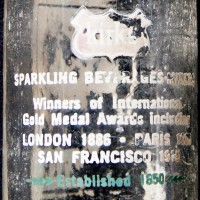
The kirk’s bottle lists the awards given to Helidon Spa and the founding date of Owen Gardner and Sons.
kirk’s
SPARKLING BEVERAGES – MIXERS
Winners of International Gold Medal Awards including
LONDON 1886 – PARIS 1908 – SAN FRANCISCO 1915
Established 1850
A long and distinguished history indeed. Except we know that this isn’t quite true. kirk’s was the trading name of Helidon Gardner Ltd, which did not exist until Owen Gardner and Sons merged with the Helidon Spa Water Company in 1959. So although kirk’s itself was a new brand, Helidon Gardner Ltd happily constructed its history out of the two merged companies, taking the founding date from Owen Gardner and Sons while claiming the medals awarded to the Helidon Spa Water Company.
I suspect that the kirk’s bottle that I found in the gully was made not long after the Helidon Gardner merger took place in 1959. Aside from the fact that its design simply feels ‘old’ (they really don’t make ’em like this anymore), it looks very similar to other 6 oz bottles that the company used soon after the merger.44 This also means that the bottle was likely to have been filled in the factory that the Helidon Spa Water Company built at Lang Parade at about the same time as the merger.
In the gully I also found a screw-top lid from a bottle of kirk’s lemonade. But this lid does not belong to the bottle I’ve discussed above, which was designed for a crown seal rather than a screw-top.
Ginger ale fail
Where did the name ‘kirk’s’ come from in the first place? To find out, we need to dig a little more deeply into the history of Owen Gardner and Sons.
Owen Gardner died in 1888, leaving the business to his sons, Alfred and Ernest. When Alfred died in 1917, management duties were maintained by a Mr T. Kirkpatrick, who, with the assistance of a chemist named W. Doolan, began developing a special new ginger ale recipe. Kirk’s Ginger Ale went on to become the company’s flagship product.
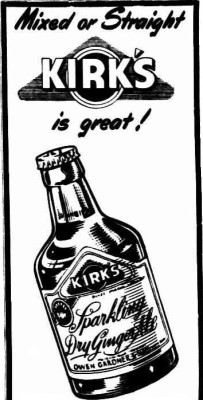
An ad for Kirk’s Dry Ginger Ale published in 1952. The drink was then a product of Owen Gardner and Sons. (Trove)
But the company could not ride solely on the success of Mr Kirkpatrick’s ginger ale. By the early 1930s, under the management of Owen Stanley Gardner (one of the founder’s grandsons), the company was going broke. Help arrived in the form of Robert Sweeney, who just a few years earlier had bought and resurrected another bankrupt manufacturing company, Coo-ee Cordials. Sweeney bought Owen Gardner and Sons in 1935.
Perhaps unhappy with the change in management, Kirkpatrick left the company and joined the company’s main competitor, Tristram’s.45 In an audacious move, Tristram’s then started selling Kirk’s Ginger Ale, even using labels and bottles similar to those that Owen Gardner and Sons were still using to sell the same product.
Robert Sweeney took the Tristrams to court to assert his exclusive right to make and sell Kirk’s Ginger Ale. Sweeney not only won the case but also reaped the benefits of the resulting publicity, which led to a huge surge in sales.46
Whether or not Kirkpatrick actually expected the stunt he pulled with Tristram’s to work, the episode suggests that he was proud of his ginger ale recipe — and rightly so. A quarter of a century later, the product was still performing so well for Owen Gardner and Sons that kirk’s (now with a lowercase ‘k’) was chosen as the brand name for the whole Helidon Gardner soft drink range. Kirks (now without the apostrophe, and in uppercase letters) ginger ale is still available today. Oddly though, the labels on Kirks soft drinks now say ‘Australian made since 1865’, which is at odds with the ‘Established 1850’ on the old kirks bottle.
Small fish in a big pond
Even as a merged company, Helidon Gardner was a small fish in a big pond that was fast filling up with global players. The big fish circled, and in December 1964, Helidon Gardner became a subsidiary of Associated Products and Distribution Pty Ltd, which in turn was a subsidiary of British Tobacco (Australia) Ltd, known today as Coca-Cola Amatil.47 Kirks is still owned by Coca-Cola Amatil today, along with a host of other well-known brands in the Asia-Pacific such as Mount Franklin, Golburn Valley, SPC and Deep Spring.
Coca-Cola Amatil was (and is) also the local distributor of Coca-Cola, a product that also featured amongst the rubbish I found in the gully. At first I found just a fragment, but I later found the lower part of the bottle as well (I never did find the top).
The bottle that I found looks exactly like this one, which at the time of writing is listed on ebay for $30. Most similar bottles held 32 fluid ounces, where as this one holds 35 — or, if you like, one litre. That both units are listed suggests that the bottle was made when Australia was converting to the metric system in the late 1960s and early 1970s.
Peace at last
For a while, Helidon Gardner and a few other local manufacturers, such as Taurina Spa and Sostanza, continued to sell mineral water from Helidon. But the changing market and other factors soon brought this to an end. The bores used by Helidon Gardner were capped in 1983 after they had become contaminated with other sources of groundwater. Taurina Spa and Sostanza survived a heath scare in 1981 when CSIRO found alarming levels of radium in their water, but they too ceased production by the mid-1990s. Joan Webster launched a brand of still mineral water from the old Sostanza bore in 2001, but ceased production in 2005. Perhaps the hapless tribe buried during the Dreamtime can finally rest in peace.
Time for a cold one
Enough soft drink. If you’ve made it this far then you’ve earned yourself a cold beer.
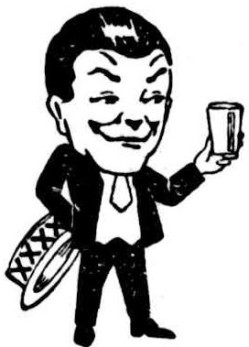
Mr Fourex (Trove)
And the best cold beer is … no, scratch that. Is a XXXX ok?
The Castlemaine Perkins brewery, where XXXX is made, must be the most famous building in Milton.48 Its tall chimneys and flashing red Xs can be seen from miles around. Its image has also found its way into fridges and eskies across the country and even around the globe,49 stamped onto literally millions of cans and bottles of XXXX beer.
But unless you’ve imagined the apocalypse coming while waiting for a train at Milton Station (a distinct possibility on some summer days), you’ve probably never seen the brewery looking quite like this.
The XXXX can in that I found in the gully has the same ring-pull top as the Tristram’s can, but the similarities end there. While the two soft drink cans (Tristram’s and Export Cola) were crushed yet shiny, this beer can is in near-perfect shape but is rusted all over, and in parts all the way through. Only the top is free from of rust: it is covered in a white scaly substance instead. What is left of the can’s bright yellow label is blistered and chipped: it seems to be painted onto the metal, rather than baked into it like the printing on a modern can.
These differences all stem from the fact that the can (except for its top) is made from steel, not aluminum. Steel is what all beverage cans were made from until the 1950s, when when aluminium ‘soft-tops’ were introduced to make steel cans easier to open (there was no ring-tab then — they had to be opened with a can punch). The first all-aluminium cans appeared soon afterwards.
Aluminium cans are lighter than steel cans, and therefore cheaper to transport. Aluminum also doesn’t rust like steel. (It does corrode, but the result is aluminium oxide, which acts to protect rather than degrade the metal.) Despite these advantages, aluminium cans did not replace steel ones straight away. I have a dim childhood memory of small (around 250 ml) steel soft drink cans being used as late as the mid 1980s, when all normal-size (375 ml) soft drink cans were aluminium. Steel cans are still used today in parts of Europe, Africa and Asia.
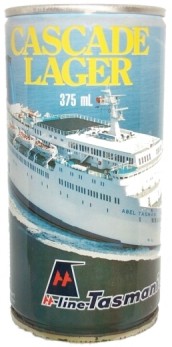
A steel Cascade Lager can, picked by the Australian Beer Can Collectors Association as the 1986 Can of The Year.
I was way too young to be drinking beer in the 1980s, so I don’t have any memories of beer cans from that time. But plenty of beer cans from the 1980s and earlier have been lovingly kept and cared for by beer can collectors. Many of these cans are displayed and discussed on the internet, both on dedicated collectors’ sites such as the Australian Beer Can Collectors Association and on ebay, which seems to be the most popular way for collectors to buy and sell cans.
A look through the Australian Beer Can Collectors Association’s ‘can of the year’ gallery reveals that there were still plenty of steel beer cans being made in the 1980s. One way in which these cans were superior to aluminum ones is the quality of the graphics on their labels, many of which commemorated special events (football finals, yacht races, car races…) with colour photos and intricate designs. These fancy labels fueled the craze for beer can collecting, and might also explain why some beer cans continued to be made of steel even when aluminium had become the standard for soft drinks.
So far, I’ve not been able to pin down the production date of my XXXX can, but I’m hoping that somebody out there can offer a well-informed guess. There are a few physical features that might help. The can is made from three parts (top, bottom and middle), and it has a seam running down the body. Its top edge is straight rather than crimped or tapered. (Manufactures started crimping cans in the 1970s to reduce packing space as well as the amount of thicker aluminum needed to make the top. Straight-sided cans were no longer made after 1984.50) Unfortunately, the exact volume of the can, and the units it was measured in, are unclear because the relevant part of the label has rusted away. About the only clue to the can’s age on the label is the style of the cars and the train in front of the brewery, but it will take a better-trained eye than mine to draw any conclusions based on this particular evidence.
From little things…
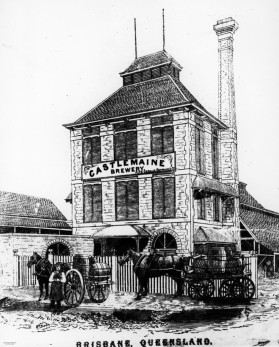
The Castlemaine Brewery at Milton in 1879. (State Library of Queensland, negative no. 9357)
One thing that is certain is that the beer itself goes back much further than the can. The brewery at Milton was established in 1878 by the brothers Nicholas and Edward Fitzgerald in cooperation with the local enterprise Quinlan Gray and Co. The Fitzgerald brothers already owned another brewery in Castlemaine, Victoria. At about the same time as they established the brewery at Milton, they also purchased the Milton Distillery, which was located across the road on present-day Cribb Street.
The first beer brewed at Milton was called XXX Sparkling Ale, and was made using the same recipe as the beer from Castlemaine. In 1916 the three Xs became four (a throwback to an old system of indicating the beer’s strength) with the launch XXXX Sparkling Ale, a beer more suited to Queensland’s climate. The famous XXXX Bitter Ale appeared in 1924, with advertisements featuring a funny little winking guy in a suit and a boater hat.
In 1928, the Castlemaine Brewery bought out a competitor, the Perkins Brewery, which had been established in Toowoomba 1869 by the brothers Paddy and Thomas Perkins.51 The restructured company was named Castlemaine Perkins Ltd.
The amalgamation called for an expansion of the Milton brewery. Among the £50,000 of improvements made in 1928 were an automated bottling plant (similar perhaps to the one that Tristram’s built in South Brisbane that same year), a new cold storage and loading facility that opened onto Black Street (the street behind Officeworks running parallel to Milton Road), and a new sub-station to power the brewery’s machinery and refrigeration plant, which had to produce 150 tons of ice each day to cool the beer. A writer for the Brisbane Courier who inspected these improvements reported seeing ‘the most up-to-date brewery plant in the Commonwealth’.
Queensland’s thirst for XXXX kept growing, and so the brewery kept expanding. As early as 1933, plans were in hand for more additions including a new gyle (fermentation) room and malt storage tower. By 1936 Castlemaine Perkins had acquired Black Street from the government in preparation for another major expansion. Further additions and extensions were planned (and presumably undertaken) in the 1940s and the 1950s.
The image below shows what the brewery looked like from the air in 1946. At that time, the brewery only occupied the block at the centre of the picture. The block just to the right of centre was still owned by the Queensland Bedstead Company, and residential lots covered the hill from Black Street all the way up to Heussler Terrace. Today, the brewery covers the entire middle section of the image, as you can see by hovering your cursor over the frame.52
In 1946 the Milton brewery occupied a single block. Now it spans all the way from Milton Road to Heussler Terrace.
For decades now, the Castlemaine Perkins brewery has been a permanent fixture on both the XXXX label and the Milton skyline. But behind the scenes things have continued to change. In 1980 Castlemaine Perkins merged with Tooheys to form Castlemaine Tooheys, which in turn was acquired by Alan Bond in 1985. At the time, this was the biggest corporate takeover ever seen in Australia. Bond put Queensland’s beer drinkers off-side straight away by removing a prominent XXXX sign from the brewery (exactly which sign I am not sure — I’d love for someone to clear this up) and installing a Bond Brewing logo.53 As if that wasn’t enough, he put his company’s Perth address on the labels.
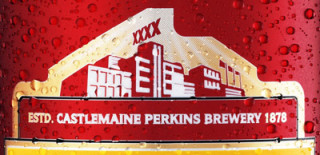
The Castlemaine Perkins brewery as depicted on a modern can of XXXX Bitter (image sourced from danmurphys.com.au).
Five years later, his corporate empire collapsing, Bond’s brewing assets were bought by Lion Nathan, a company which was the product of a merger between New Zealand’s Lion Breweries and retailer LD Nathan & Co. In 1998, Japan’s Kirin Brewery acquired 45% of Lion Nathan, and in 2009 it acquired the remainder. So, while Queensland’s most popular beer is still brewed in Milton, it is owned by the Japanese.
A quick pash
My collection from the gully included one more can. This one is also made of steel, but it is smaller than a normal can. Like the XXXX can, it is covered in rust, but the words ‘Golden Pash’ are just visible, written in yellow on what appears to be a dark blue background. Above them is a graphic consisting of a green horizontal line and a large yellow circle.
Or is that a golden circle?
If you are from Australia, and especially Queensland, then Golden Circle should need no introduction. The company began in 1947 with a pineapple canning factory in Northgate, Brisbane. Since then it has diversified to produce canned vegetables, fruit juice, soft drinks, cordials and jams. The Northgate factory is still operating, but, like XXXX, Golden Circle is no longer locally owned. It was bought out in 2008 by a little American company called Heinz.
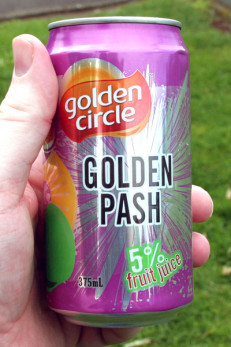
A modern can of Golden Pash softdrink (Dave M, flickr)
Golden Pash is a fruit drink blend that still features among the company’s products, both in carbonated and non-carbonated forms. I don’t know when Golden Pash was first made, or when it was sold in cans like the one I found. And this time, the internet is offering no leads whatsoever. (Googling ‘Golden Pash’ returned something very unrelated indeed.) I’ll note that my Golden Pash can has the same kind of ring-pull top as the XXXX and Tristram’s cans, and assume that it was bought, drunk and discarded at around the same time.
Bottles for hire
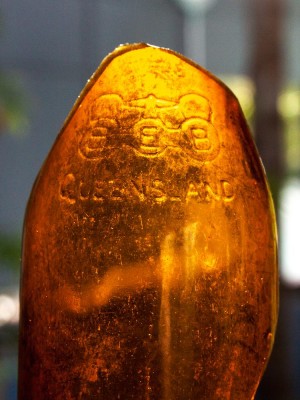
A piece of glass embossed with the Brisbane Bottle Exchange logo. The bottle probably contained XXXX beer.
This large piece of amber-coloured glass is all that I found of the bottle it belonged to. Embossed on the glass is a logo that looks like a pair of binoculars containing the letters ‘B-E-B’. This was the logo of the Brisbane Bottle Exchange, a company that made and managed bottles that were used and re-used for various products, including XXXX beer.54
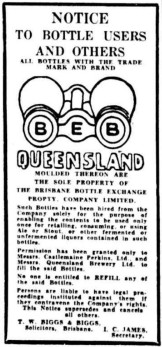
A notice from the Brisbane Bottle Exchange, published in the Courier Mail in 1941 (Trove).
There was a time when each state in Australia had at least one bottle exchange company like B.E.B. I’m not sure when the practice of returning and reusing beer bottles ended, but I suspect it was in the mid 1980s.55
These sorts of beer bottles are highly sought after today by home brewers. Not only do they have the right top for a crown seal, but they are made of thicker glass than modern beer bottles and are thus much less likely to explode in the garage.
There is a Brisbane Bottle Exchange listed in the phone book today at 97 Legeyt St, Windsor, but I do not know if it is the same company.
Not quite coffee
Did the owner(s) of this rubbish drink nothing but soft drink and beer? The evidence examined thus far might suggest so, but this fragment of glass reveals that they also drank coffee — or at least something approaching it.
Embossed on the glass is “ESS COFFEE & CH…”. I would have guessed that the missing word was ‘chocolate’, but some googling reveals that it was in fact ‘chicory’.
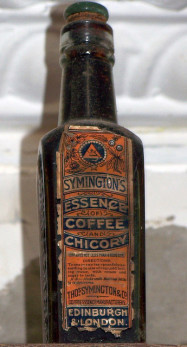
A bottle of Symington’s essence of coffee and chicory (Will S, flickr)
I don’t think I’ve ever seen or tasted chicory in my life. And I had no idea that it could be mixed with coffee. Apparently though, this was once very common. In lean times such as during wars and the Great Depression, chicory was used as an additive to stretch coffee further, or as a substitute if no coffee was available.
Essence of coffee and chicory is still sold today by brands such as Bushells and Camp, but the bottle that I found came from a company called Symington & Co. from Edinburgh, Scotland. There are dozens of bottles on ebay and collector websites embossed with ‘Ess coffee & chicory’ and the Symington name. All of them have a square base and rectangular sides that look exactly like my piece of glass. Two such bottles are in the collection of the Newcastle Regional Museum, and their registration numbers suggest that they have been dated to 1979 and and 1986.
Symington’s was founded in 1827 and was famous for introducing pea flour soup to the world in the 1850s. The company still operates today as a ‘branded convenience food business’, which means that they don’t manufacture food under their own name but instead manage other brands, including WeightWatchers and Campbell’s Soup in the UK, and since May 2013, Raguletto and Five Brothers in Australia.
Mother’s milk of magnesia
This is another bottle that clearly didn’t contain beer or soft drink. It looks like it didn’t contain food at all, but rather medicine. When held up to the light, its one-time contents are revealed: Nyal milk of magnesia.
Milk of magnesia, otherwise known as magnesium hydroxide suspended in water, is a common ingredient in antacids and laxatives. It’s another new name to me, but a dig through Trove reveals that it was once a mainstay of the household medicine cabinet. It was sold in plain and sweetened forms (the latter to make it more palatable for children), and was used to ease indigestion, stomach complaints, constipation and flatulence, and as a mouthwash to promote oral and dental health.56 It is also a very effective mattifier (makeup primer), especially on oily skin.57
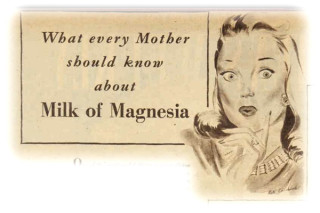
Part of an ad for Nyal Milk of Magnesia in the Australian Women’s Weekly, March 1949 (Trove).
You are unlikely to get milk of magnesia over the pharmacy counter these days. It is banned (at least as a food additive) in Australia and New Zealand,58 and sales in the UK were recently suspended because the product contained more sulphate than allowed by the Council of Europe.59 In Britain a black market emerged on ebay, where for a time the product was selling for ten times its normal price. People looking for a cheap makeup primer now turn to Mylanta, a common antacid that contains magnesium hydroxide. That’s right: because milk of mangesia is hard to get, people now put antacid on their face.
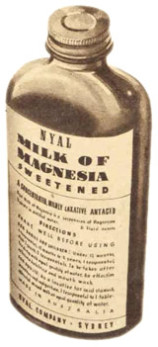
(Trove)
Nyal is an Australian brand that was established in 1911. The company originally made a variety of medicines and toiletries such as face cream, cold medicine, liver tonic and tooth paste. Nyal was making milk of magnesia from as early as 1922 (prior to that they made citrate of magnesia) and as late as 1966. These days Nyal specialises in supermarket lines of cold, flu and cough medicines as well as nasal sprays, cold sore creams and ecsma creams.60 Nyal is now owned by the Canada-based Valeant Pharmaceuticals International.
Reckitt & Colman’s mystery elixir
I’ve saved what I think is the most interesting looking bottle for last. Like the previous two bottles, its shape is more suggestive of medicine than food (with a bit of imagination, it almost resembles a chemistry flask). If it did contain food, it was probably not an everyday product but rather a special oil or sauce that spent most of its life at the back of the pantry.
At first glance the bottle appears to have no identifying markings, but closer inspection reveals the following written in small type around the base:
THISBOTTLEALWAYSREMAINSTHEPROPERTY OF RECKITT & COLMAN PTY LTD
The first six words, which have been jammed together to fit within the two seams running down the side of the bottle, tell us that the bottle was intended to be returned and refilled, just like most of the others I found. The remaining text, spaced much more comfortably, is the only clue we have about what the bottle once contained.
Unfortunately, just knowing that the product came from Reckitt and Colman doesn’t help to narrow it down. Even if you have never heard of Reckitt and Colman (I hadn’t), you will almost certainly know some of their many products. They were the company behind Dettol, Disprin, Brasso, Keen’s Mustard, Harpic, Sanpic (a concentrated disinfectant), Steradent (a denture cleaner), and Senokot (a laxative). They also made the now-defunct products Vulcanol (a stove cleaner), Panvitan (a multi-vitamin), Robinson’s Baby Rice Cereal (a weaning food) and the laundry whitener Reckitt’s Blue.
The reason for this odd line-up, which features food products like mustard and rice cereal alongside disinfectants and medicines, is that Reckitt and Colman was the result of a merger that took place in 1938 between the British companies Colman’s, which specialised in mustard, and Reckitt & Sons, which made starch and cleaning products. Reckitt and Colman merged again in 1999 with the the Netherlands-based company Benckiser NV. Reckitt Benckiser still makes the Reckitt and Colman favourites listed above, as well as many other famous products including Mortein, Aerogard, Airwick, Nurofen, Strepsils, Clearasil and Mr Sheen. They no longer make mustard though, as the Colman’s food business was sold to the multi-national Unilever in 1995.
Of all the Reckitt and Colman products listed above, not one appears to have come in a bottle like the one that I found. Nor can I find any bottles like this one on ebay or other bottle collector hangouts. So, for now at least, this bottle will have to remain a mystery.
Through the window
We’ve now worked our way through all seven bottles and four cans. That’s four soft drinks, two mineral waters, two beers, a not-quite-coffee, a laxative, and a mystery elixir to top it off. Besides a full bladder and a confused tummy, what have we gained? What secrets have we recovered from these time capsules? What historic vistas have we glimpsed through this window to the past?
The dating game
Let’s start with what we have learned about the likely age of the bottles and cans themselves. The items that we can date most reliably are the cans. Their push-button and ring-pull tops indicate that they are products of the mid to late 1970s, or at the very latest, the early 1980s. The television commercials for Export Cola appear to corroborate this evidence.
The soft drink bottles are a bit more complicated. They are likely to have been made earlier than the cans: one is from a company that did not exist after 1959; one carries a modern brand but feels like something you could shoot out of a canon; and another has its volume listed in both metric and empirical units. None of them is likely to have been made after the early 1970s, yet they all might have been refilled and reused many times over before finally ending up in the same rubbish pile as the cans.
The bottles that contained medicines or essences are harder still to pin to a particular time. Even if they were discarded at the same time as the other items, there’s a good chance that they sat idle in the cupboard for many years beforehand.
There are surely more documents out there that could narrow down when these products and containers were made. But I’m not going to look for them — and not only because I’ve spent way too much time doing it already. I’d like to think that many readers of this article will remember buying or consuming these products, and can maybe even remember where and when. If you have any clues or insights to share, please leave a comment below or send me an email. If you are the person who left these particular bottles and cans in the gully (accidentally, of course!), I’d especially love to hear from you (but don’t expect to get any of the items back).
From little bottlers to Big Soda
Tracing the origins of these bottles and cans has taught me more than I even intended to know about Brisbane’s soft drink industry. In fact, before doing this, it never occurred to me that Brisbane ever had a soft drink industry. I’ve never associated soft drinks with a particular place. Most of them are to me just brands with no particular home. Yet, it seems that there was a time when just about every town made its own soft drink. The stuff must have been so cheap and easy to make that it wasn’t worth shipping in from elsewhere — unless, of course, it came from a special source like the Helidon Spa.
That all changed when multi-national companies started producing soft drink on a larger scale and therefore more cheaply than the local operators. My collection of bottles and cans harks back to this era of transition from little bottlers to Big Soda. Represented among them is the Helidon Spa Water Company, which successfully merged with a rival to become kirk’s, which in turn was snatched up by an arm of Coca-Cola. Then there is Tristram’s, the local company that decided to go it alone and paid the price. And there is Export Cola, the product pitched as the home-made antidote to foreign colas, despite itself being owned by a multi-national.
The XXXX can is another link between the old world and the new. The brewery featured on its label is a rare surviving example of a suburban beverage factory, a sight that was once much more common than it is today. At the same time, the beer’s history since this can was made illustrates how attitudes towards foreign ownership have changed. Queenslanders got all worked up in the 1980s when their beer was bought by a businessman from Perth. Nowadays it is owned by a Japanese brewer, and most drinkers probably wouldn’t care even if they knew.
No deep fat?
Advertisements are a fascinating marker of time. The ways in which advertisers appeal to consumers — including the imagery that they use, the statements they get away with, the desires that they exploit — reveal much about those consumers’ values and beliefs. Researching the brands behind these bottles and cans led me to a trove of old advertisements for soft drinks, minerals waters, beers and medicines. Among other things, these ads highlighted how markedly our perceptions of health and nutrition have changed over the last hundred years.
Before they were junk, many of the bottles and cans in the gully were vessels for what we would now call junk food. We drink copious amounts of soft drink today, but we don’t pretend for a minute that it is good for us. We enjoy mineral waters, but mostly because they taste better than tap water rather than because we think they will make us healthier. Yet this was not always the case. Tristram’s soft drinks were once marketed as health drinks because they were clean and sparklng; Helidon Spa Water seemingly qualified as a medicine just because it contained a few dissolved minerals.
Having been cryogenically frozen for 200 years, the central character in Woody Allen’s movie ‘Sleeper’ (1973) wakes up to a medically enlightened world.
Today, our views about health and nutrition are influenced heavily by medical science, and this helps to limit the types of claims that advertisers can get away with. By contrast, many of the old food and drink ads that I came across seem to be grounded in little more than wishful thinking and and old wives’ tales. We may look back and laugh, but perhaps future generations reading today’s advertisements will have just as much fun at our expense. After all, even scientists and doctors can get things wrong, and their advice is always subject to revision.
For example, about thirty years ago, our governments and medical experts launched a war on fat to combat rising levels of obesity and heart disease. Today we are still getting fat and dying from heart attacks (not to mention diabetes as well), and we are realising that the science behind nutrition is not so simple. Now there are good fats and bad fats, good carbs and bad carbs, and some experts are suggesting that sugar — especially the high-fructose kind common in today’s soft drinks — might have been the real enemy all along.61
Bringing it all back home
When I found these bottles and cans in the gully and decided to take them home, the last thing on my mind was local history. I did not imagine that tracing their stories would lead me to a richer understanding of my home city, let alone the small part of it that I have been investigating over the last couple of years. It was rather like following a tangle of string, only to find the other end already at your feet.
The Helidon Spa and Kirks bottles, and possibly the Coke bottle as well, were probably filled just a few miles from where I found them: in a bottling factory on Lang Parade, just near the Milton Drain. The owners of the same factory also built a house, now heritage-listed, at the top of the Western Creek catchment. The XXXX can came from the Milton Brewery, which sits at the opposite end of the same catchment. The Tristram’s can might have come out of a factory in South Brisbane, which today is just a short trip from Milton via the Go-Between Bridge.
Trace the physical origin of just about any soft drink or beer you can buy today, and you’ll be lucky to end up in the same state, let alone the next suburb. Look for who owns the product, and you will probably end up on the other side of the world. This shift from the local to the global is a common thread running through the story of every one of the bottles and cans from the gully. It is just one of the ways in which the world has changed since they were discarded some 35 years ago.
If we were to pick on some of the other items in the gully — the golf balls, the bricks, the bolts, ceramics and so on — we could no doubt trace entirely different pathways through history, illuminating other notable people, places and events along the way. Each item amongst the rubble offers us another possible window, a unique vantage point from which we could view the past.
Or perhaps they have been disturbed enough already, and deserve to be left to rust and rot in peace. After all, there are plenty of other gullies out there to explore.
Notes:
- Kids used to explore drains all the time, but these days it is something of a taboo — and for good reasons. Thankfully, there are still a few underground explorers around to remind us what remarkable spaces drains are. (For more examples of drain photography, see subduedmidnight.com and longexposure.net.) ↩
- If there is a golf ball collector out there who is up for the challenge, then the balls are yours. ↩
- These two ads for RC Cola include a great shot of a ring-pull can being opened. They also include scenes of beaches and beautiful young bodies that could have come straight out of the Export Cola ads. ↩
- D.B.S. Maxwell (1993), “Beer Cans: A Guide for the Archaeologist”, in Historical Archaeology, Vol. 27, No. 1, pp. 95-113. See also the Beverage can wiki and rustycans.com. ↩
- You can read more about the Tristram’s factory in Your Brisbane: Past and Present, the West End Magazine and the State Library of Queensland blog. ↩
- John Pearn (1998), “The taking of the waters: health springs and spa waters of high lithium content at Helidon, Queensland”, in Suzanne Parry (ed), From migration to mining: medicine and health in Australian history, Darwin: Historical Society of the Northern Territory, pp. 418-423 (photocopy available at the State Library, record 747317). ↩
- “Australia’s wonderful mineral water Helidon Spa, established 1879, supreme today” (191?), Brisbane: Briggs & Co. This is an undated pamphlet promoting Helidon Spa Water. It is held by the Queensland State Library (Record 717288). ↩
- Pearn (1998). ↩
- The Brisbane Courier, 6 March 1900, p7. ↩
- Or it might have been 1880, as per this article. ↩
- The Brisbane Courier, 15 April 1897, p2. ↩
- See Pearn (1998); this article about Joan Webster, who recently managed the Helidon Spa Park, and Joan’s two-in-one book about the Helidon Spa Water Company and the Helidon Spa Park (published in 2007 by Community Australia Books, and held by the Queensland State Lirbary, Record 786444). ↩
- Pearn (1998). ↩
- “REPORT ON “HELIDON SPA” WATER.” Freeman’s Journal (Sydney, NSW : 1850 – 1932) 21 Jul 1900: 22. ↩
- Morning Bulletin (Rockhampton, Qld: 1878 – 1954), July 20 1898, p5. ↩
- Townsville Daily Bulletin (Qld: 1885 – 1954) 20 Apr 1908, p3. ↩
- Townsville Daily Bulletin, 18 Sep 1907, p7. ↩
- Townsville Daily Bulletin, 12 Mar 1908, p8. ↩
- Townsville Daily Bulletin, 25 Feb 1908, p4. ↩
- Townsville Daily Bulletin, 7 Aug 1907, p7. ↩
- Townsville Daily Bulletin. 5 Sep 1907, p2. ↩
- Townsville Daily Bulletin, 9 May 1908, p7. ↩
- Townsville Daily Bulletin, 6 Sep 1907, p7. ↩
- Townsville Daily Bulletin, 4 Apr 1908, p4. ↩
- Morning Bulletin, 5 Sep 1898, p5. ↩
- Townsville Daily Bulletin, 23 Nov 1907, p8. ↩
- Townsville Daily Bulletin, 4 Feb 1908, p7. ↩
- Townsville Daily Bulletin, 12 Mar 1908, p4. ↩
- Morning Bulletin, 23 Apr 1901, p6. ↩
- Townsville Daily Bulletin, 13 May 1908, p5. ↩
- Townsville Daily Bulletin, 21 May 1908, p4. ↩
- Townsville Daily Bulletin, 21 May 1908, p5. ↩
- Townsville Daily Bulletin, 18 Mar 1908, p2. ↩
- Joyce’s obituary in the Brisbane Courier says that he moved to Auchenflower in 1902, but I can’t find any confirmation of this in the street directories of the time. The first mention in the directories of a John T. Joyce in Auchenflower is in 1915, when he is listed at Weinholt Street. Prior to that, there is a John T. Joyce listed at Edmonstone Street, Newmarket in 1911, and a John T. Sydenham Joyce at Bloomfield Street, Taringa in 1903. ↩
- Pen-y-lan was built for its original resident Miss L Cecil, who died in 1919. It sits just inside the boundary of the Western Creek catchment. On the other side of Simpsons Road lies the Ithaca Creek catchment. ↩
- John Pearn (1997), Auchenflower – the suburb and the name: A history of Auchenflower, Brisbane, Australia, Amphion Press: Herston, Qld, p78. ↩
- The factory is mentioned in Josephe Joyce’s obituary in the Courier Mail (23 August 1961, cited in Webster 2007, p63), and is visible in the 1960 aerial photograph (viewable at the Brisbane City Archives). ↩
- Joan Webster (2007), The Helidon Spa Water Company, Community Australia Books: Darling Heights, Qld. This book is a great compilation of historical information, but includes a lot of unattributed verbatim reproductions of other works. Webster was for a time the owner of the Helidon Spa Park, and collected various Helidon Spa bottles. ↩
- The Aldine History of Queensland (written by W Frederick Morrison and published in 1888 by the Aldine Publishing Company) says that the company began in 1852, but the company itself cited 1850 in their labels and advertisements (see the next section about Kirks). ↩
- I suspect that Owen Gardner and Sons bought it. At least up until 1897, Owen Gardner and Sons got their spa water from a property owned by Edward Campbell, about a mile and a half from Primrose’s spring. In 1901, advertisements for the newly branded Gardner’s Spa Water referred to a ‘recently acquired spring’. My guess is that this was the same spring that they had been using previously — that is, the one owned by Campbell. ↩
- An advertisement printed in 1924 even claimed that the company’s holdings took in ‘the whole mineral belt’ at Helidon, and that only their natural spring (and not an ‘artificial’ bore like the Gardners’) could produce water with medicinal properties. This ad prompted a formal rebuttal from Owen Gardner and Sons. ↩
- For example, see these three ads. ↩
- It weighs 402g, while the recently emptied beer bottle on my desk weighs 207g. ↩
- See Webster (2007), p73). ↩
- Incidentally, Thomas Tristram himself had worked for Owen Gardner for several years until he started his own business in 1883. (This anecdote is mentioned in a chapter from an autobiography by Brian Sweeney, a the son of Robert Sweeney. The chapters is buried somewhere in the Australian National Corpus, but I am no longer having any luck trying to retrieve it. ↩
- See these two articles from the Brisbane Courier, and the excerpt from Brian Sweeney’s autobiography on the Australian National Corpus (if I ever manage to retrieve it again, I will post a link). ↩
- Webster (2007), p82. ↩
- Unless you also count Suncorp Stadium, which by virtue of the State of Origin alone might be a more widely known landmark. ↩
- It has reputedly been exported to London. ↩
- Maxwell (1993), p110. ↩
- Perkins also owned the City Brewery at the corner of Albert and Mary Streets, which operated until 1937 when it was damaged by fire. ↩
- In the 1960 aerial photo (which you can see at the Brisbane City Archives) the brewery looks to have been refurbished but the footprint is much the same, apart from some encroachment across the entrance at Black Street. ↩
- Katherine Feeney (2011), “Brisbane Beer Battles“, Brisbane Times, 23 September 2011. This page from Beer & Brewer Magazine contains two articles about Australia’s brewing industry in the 1980s. ↩
- There are examples of XXXX B.E.B bottles on this homebrew forum post and this report about bottles and other items retrieved from an old dump site at Stirling Park, near Canberra (links to the rest of the report are here). ↩
- I have a very vague memory of being in the car while my parents dropped off boxes of beer bottles at a some sort of collection point. But since neither of them can remember doing this, the memory might just be the result of some crossed neurons. ↩
- These uses are all suggested in this ad from The Australian Women’s Weekly, 19 March 1949. ↩
- Long term use of milk of magnesia for this purpose is not recommended because it is very alkaline, whereas skin is slightly acidic. ↩
- Or at least it is not listed by Food Standards Australia New Zealand, which I gather amounts to being banned. Magnesium hydroxide is also known as food additive E528. ↩
- Most reporting of this action claimed that it was a result of European Union meddling, but this article by the European Commission points out that this is not the case. ↩
- This feature in the Australian Women’s Weekly from 1960 includes colour photographs of Nyal’s products and factory of that particular time. ↩
- The recent interest in fructose as a dietary toxin has emerged largely from the work of the pediatric endocrinologist Dr Robert Lustig, discussed in this article from The Guardian. A good overview of some of the complexities around fats and carbohydrates can be found in this article from The Slate. ↩

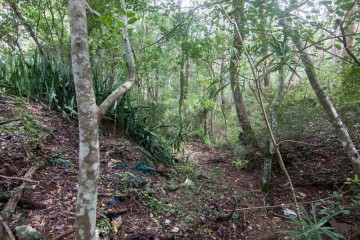
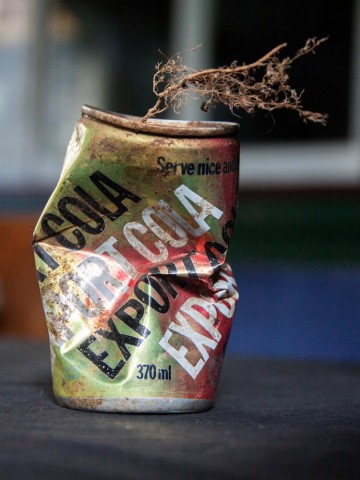
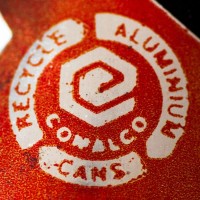
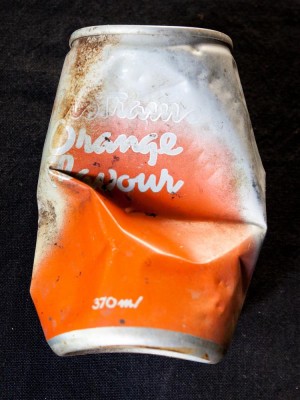
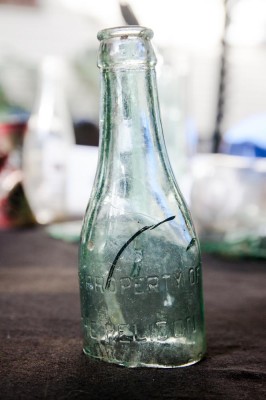
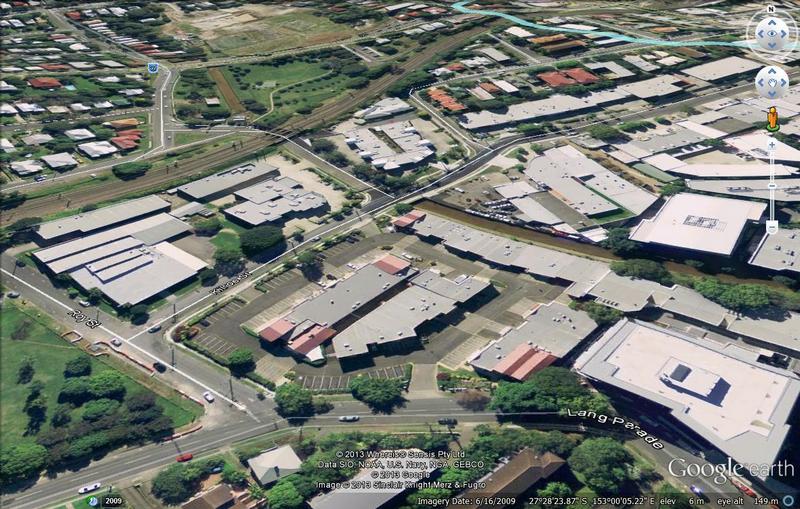
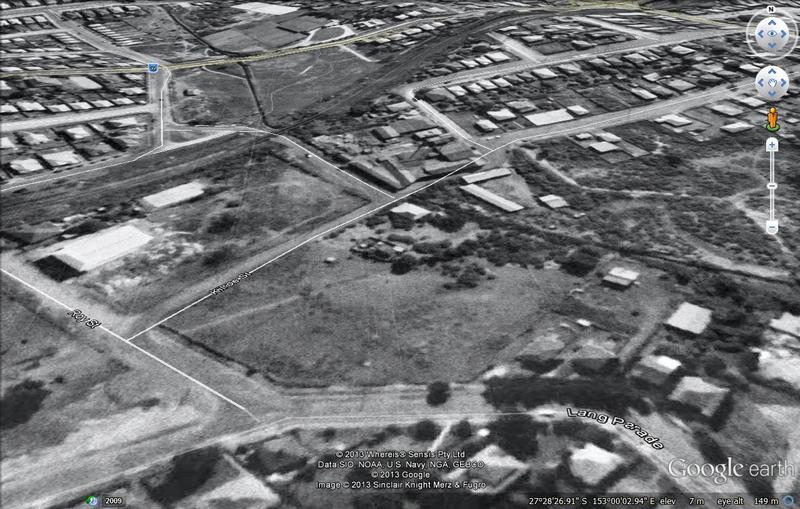
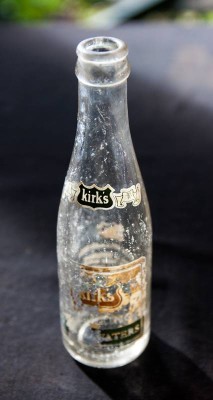
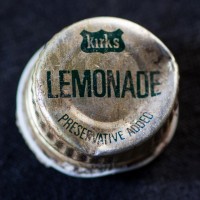
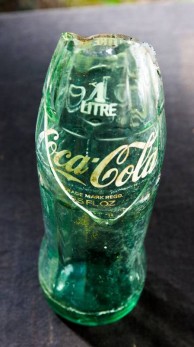
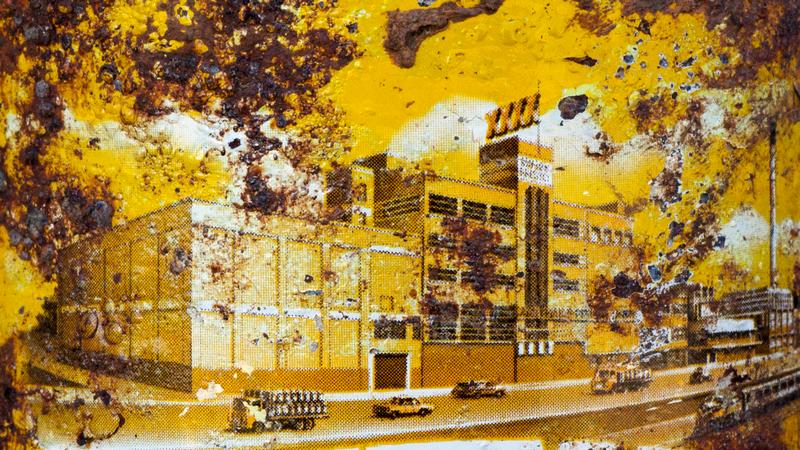
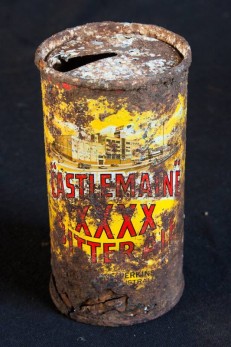
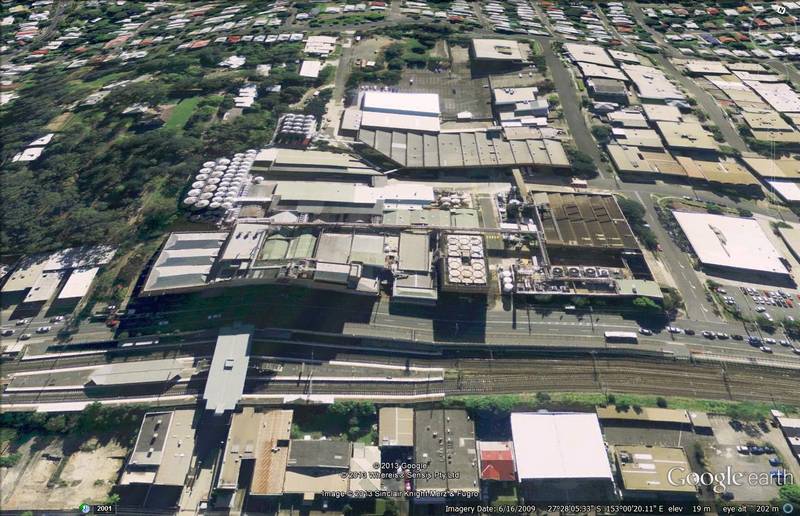
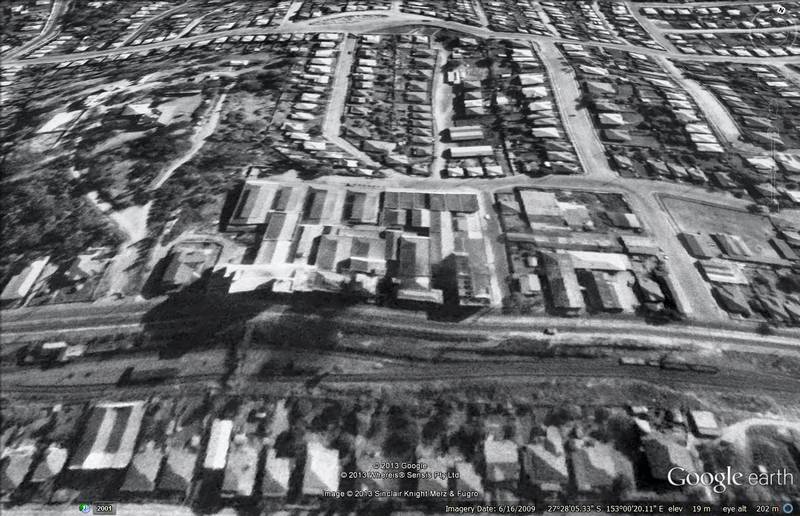
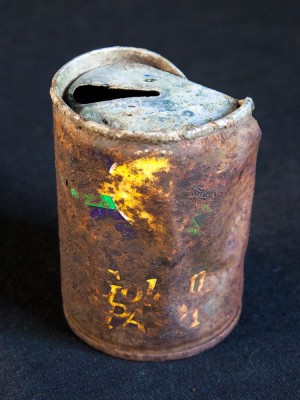
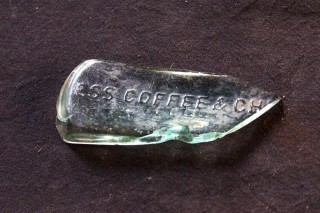
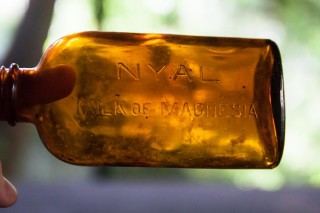
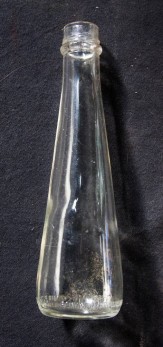
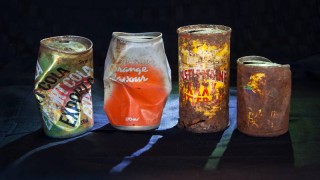
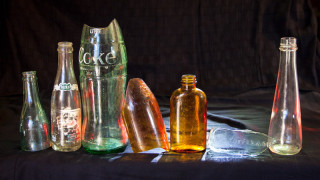
Pingback: Langsville Creek, Part 3 – The Headwaters | There once was a creek . . .
Hello, I am one of the “staff” of the above bottle forum, and after having seen you “Mystery Bottle” of Reckitt & Colman, I have posted it for you in our “HELP Section”, which can be found here:
http://www.ozbottleforum.com/index.php?/forum/5-help-pages/
It is listed as “Help Needed To Identify ” Mystery Bottle ” and your website has been acknowledged, as it should be. (I personally found it really interesting from the point of view of a bottle collector.)
To join this forum will cost you nothing, and once a member you will find that there are a lot of experts available to help you with identifying bottles. There are quite a few bottle collectors in the Greater Brisbane area who are members. Have a look at the forum, and if you would like to join us, you would be very welcome
Cheers,
Rick Irving
Thanks Rick, I’ve managed to log into the forum. I look forward to seeing if someone can solve the mystery. And of course if they do, I will update the article accordingly.
We just found the same bottle and was wondering what you found out about this little fellow. Its a sweet little bottle and in perfect condition .
I’m fascinated by your Reckitt & Colman mystery bottle.
Here’s my offering: There was “Reckitt’s Blue”.
It was used most often as a “knob” in a muslin bag waved around in the last rinse of the clothes’ washing to achieve “optical brightness”. The so-called knob was cylindrical, a compacted cobalt-blue power, about 30 centimetres long by 30 centimetres in diameter, and tied up in a little muslin bag. It was called “the blue bag” and was also considered useful for beestings.
Did it also come in a bottle similar to the shape of your mystery bottle, about fifty years ago? The size, compared to the coke bottle, doesn’t discount that in my mind.
My apologies, I don’t know what the Reckitt and Colman bottle held.
An illustrated advertisement for Reckitt’s Liquid Blue came to light, and in a very different bottle. (The liquid blue product was designed later, for washing machine use.)
I agree the Helidon Spa Water Company’s factory was on River Road (Coronation Drive), but I believe it was situated further along between Skew Street and Eagle Terrace. Notice the sharp angle consistent with that corner.
Many years later, 1931, in Henry Alcock’s shot of the partly built Grey Street Bridge (William Jolly Bridge) with the river in flood, the letters “IDON”, are discernible through the trees to the right of the picture. It seems they could be part of “HELIDON” on the roof of a building that appears to be on the left of the bridge entrance, rather than on the right. (This image is on UQ’s espace.)
I have been collecting pieces of broken china from Ithaca Creek and Enoggera Creek over the last few years (to make a mosaic picture). Recently I have found 3 pieces of a broken Helidon Spa ceramic bottle in one section of Ithaca Creek. I was curious as to why I am finding these pieces in just the one spot.
Also, I googled the company and could not find any of their bottles that were ceramic, only glass…any insights??
Hi Julie. Those ceramic pieces are likely to be very old, possibly 100 years or more. I’m not sure when glass bottles began to be used, but I’m pretty sure that Helidon Spa water was originally sold in ceramic bottles. In fact, last time I was in the John Oxley Library (Level 4 at the Qld State Library), I think there were some ceramic Helidon Spa bottles on display in a glass cabinet on the far wall. If I were you, I would go and check those out, see if they match your fragments!
Hi there
My son in law found loads of aluminium beer and soft drinks cans, some as old as 25 years, on a job he was doing. They are all in very good nick and he wants to perhaps sell them. Any advice as to where, or to who? L
Sorry I missed your comment, Linda (my email alerts don’t seem to work anymore!). But no, I don’t really know where is the best place to go to sell old bottles and cans, except that there is clearly an active market for them on ebay.
Just a minor thing. The small hole on the can with two holes is to let the air in when you drink it, not to let the pressure out on opening.
Not having opened one of these cans myself, I suppose I have to take your word for it! I can’t remember if I read that the small button was to release the pressure or if I inferred it from the instruction on the can to ‘push top first’. And I imagined that pushing larger tab would be easier once the pressure was left out. Certainly though, I can see how the small hole would be needed to allow the drink to flow through the big hole.
Hi. Sorry to revive such an old thread. I remember when these cans were first brought out. They were called “pop tops”, and were supposed to address the litter problem caused by discarded ring-pulls. Seriously, back then ring-pulls used to clog the gutters and footpaths like ciggie butts do today. Both of your theories are correct – 1) The small circle was popped first to relieve the pressure, so the big circle could be popped. 2) Having the small circle popped then allowed the drink to flow freely through the big circle. Hope this makes sense. They didn’t last too long before they were replaced by the current ring-pulls we have today, which remain affixed to the can after popping. Sorry for such a wordy reply, but it’s Saturday night and I’ve “popped a few tops”.
Here’s one for your bottles, a heavy brown glass bottle embellished with J H Jackson, Miles. To my understanding they were taken over by Tristrams, any other thoughts ?
Accustomed Dope Fro this by-product
I have a metal Helidon Spa Water Co. LTD bottle opener RP 702661
Hi! Cool page. I will need to read a bit more throroughly but I thought you might like to see the bottle we found in the wall of our old queenslander (built 1897) yesterday. It’s from the Brisbane Aerated Water Company. I was so excited so naturally I’m doing research on the company. It’s a very cool bottle and has a marble in it!
Thanks for all the brilliant info. We found a Helidon Spa bottle at the bottom of our garden, also on Ithaca Creek.
HI I am a new collector of old bottles.
saw this page with the Reckitt & Colman Pty Ltd bottle on it.
I have one,
and also a bottle with just R & C Pty Ltd on it.
do you know anything about them?
I have also a bottle with just The R & C Pty Ltd around the base. Do you have facilities to put up a picture?
I have noticed you don’t monetize your blog, don’t waste your traffic, you can earn additional cash every month.
If you want to read about this method, simply
search in gooogle: dracko’s tricks
I have just found a brown helidon bottle in Broadbeach under sand not a chip on it how do I get the age of it
Hi, I was allowed to drink chickory occasionally as a child. I was born in 1954. It was a special drink for us as normally we drank sweet milky tea.The chickory label might have had a head only picture of a man wearing a fez and mainly coloured blue and red if I remember correctly.
Will someone please tell me about QGM marks, dates and manufacturing
I just dug up a bottle with QGM marks. Anyone know where it comes from?
Did you ever get any further with this? We too have uncovered a bottle with “QGM 585 NOT TO BE REFILLED” on it and wondering if we can find out more about its origins.
tonyparry1964@gmail.com
Awesome read !
Thnx for the read. Been a collector for as long as i remember.
There’s a aerated water company that waa on tingal rd wynnum Queensland. Named
Win-em
If anyone could help out with any info on this company. I’ll be ya besty. Lol.
I’ll post a pic soon.
Cheers
Just some small info. We were drinking XXXX out of tin cans in 1978 and they had the tear of ringpull. I am not sure when hey switched to aluminium but it wasn’t long after this.
I hope last drinks haven’t been called on this thread, I was out fossicking around Brisbane River and found a beautifully shaped amber coloured bottle. The marking on it reads: “This bottle is the property of Busby & Sons Ltd”. This glass bottle manufacturer existed in the 1950’s (purely a bottle manufacturer) located in Montague Rd South Brisbane. The top corkage area was broken and very sharp so I buffed it smooth with my dremmel, popped a candle in it and it creates a real ambiance when lit. It’s great reviving old pieces!
Thanks for all the information about old bottles, I’ve got some of these in my collection. You can tell the year make on coke bottles look at the numbers embossed near the bottom about 100mm up .
Any information on Cork Bros soft drinks?
Pingback: Как избавиться от страха и чувства тревоги, беспокойства без причины и стресса
Pingback: Reduslim prezzo in farmacia
Pingback: Reduslim prezzo in farmacia
Pingback: как избавиться от чувства вины
Pingback: как избавиться от чувства вины и стыда
Pingback: как избавиться от чувства вины
Pingback: Safe to Buy Atarax Without a Prescription
Pingback: Buy Atarax 10 mg, 25 mg online